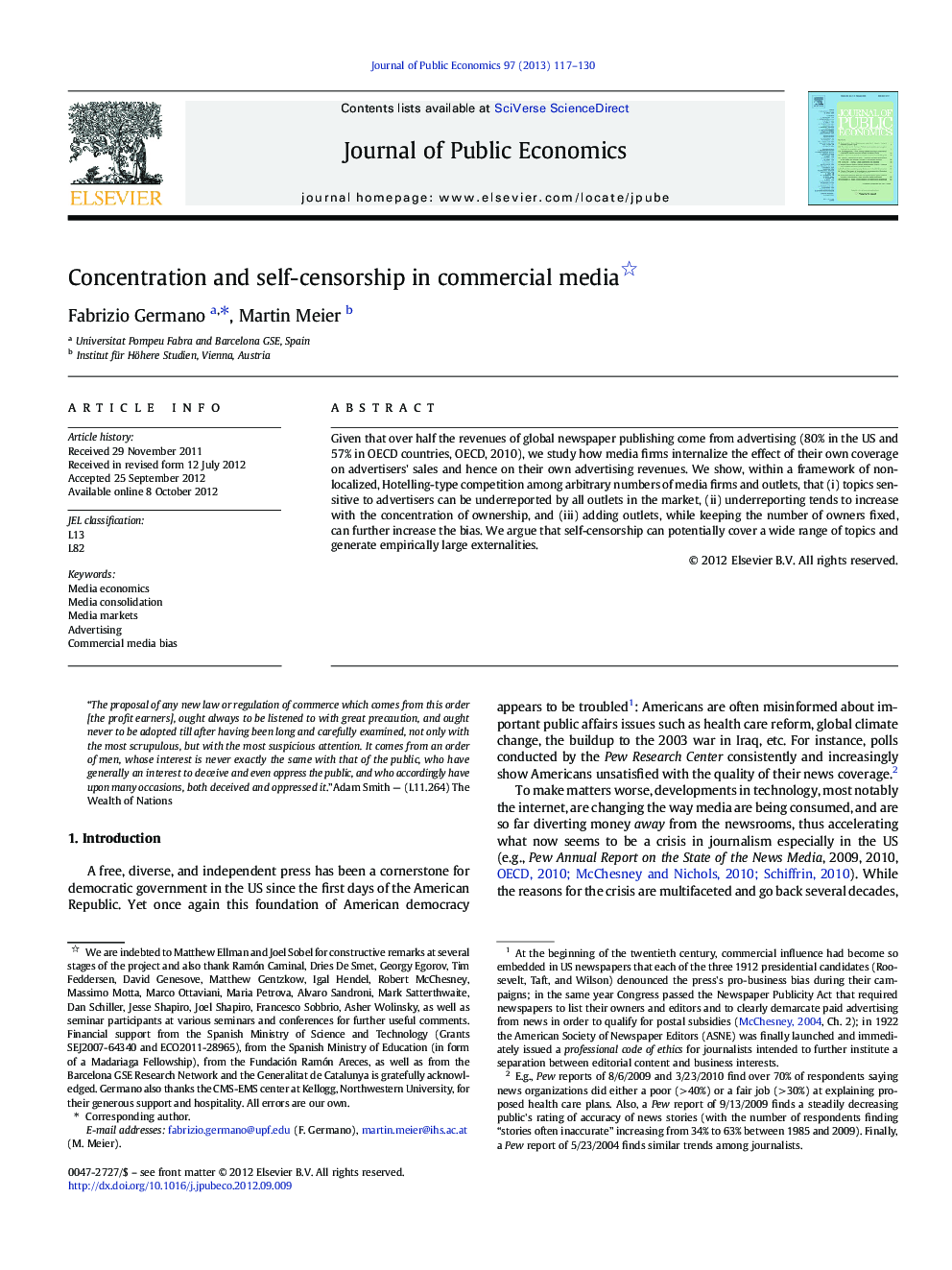| Article ID | Journal | Published Year | Pages | File Type |
|---|---|---|---|---|
| 969983 | Journal of Public Economics | 2013 | 14 Pages |
Given that over half the revenues of global newspaper publishing come from advertising (80% in the US and 57% in OECD countries, OECD, 2010), we study how media firms internalize the effect of their own coverage on advertisers' sales and hence on their own advertising revenues. We show, within a framework of non-localized, Hotelling-type competition among arbitrary numbers of media firms and outlets, that (i) topics sensitive to advertisers can be underreported by all outlets in the market, (ii) underreporting tends to increase with the concentration of ownership, and (iii) adding outlets, while keeping the number of owners fixed, can further increase the bias. We argue that self-censorship can potentially cover a wide range of topics and generate empirically large externalities.
► We develop an industrial organization model of commercial media bias. ► Media firms internalize the effect of their content on advertisers' sales. ► Topics sensitive to advertisers may be underreported by all outlets in the market. ► Underreporting increases with the concentration of ownership. ► This may generate externalities with potentially substantial welfare effects.
